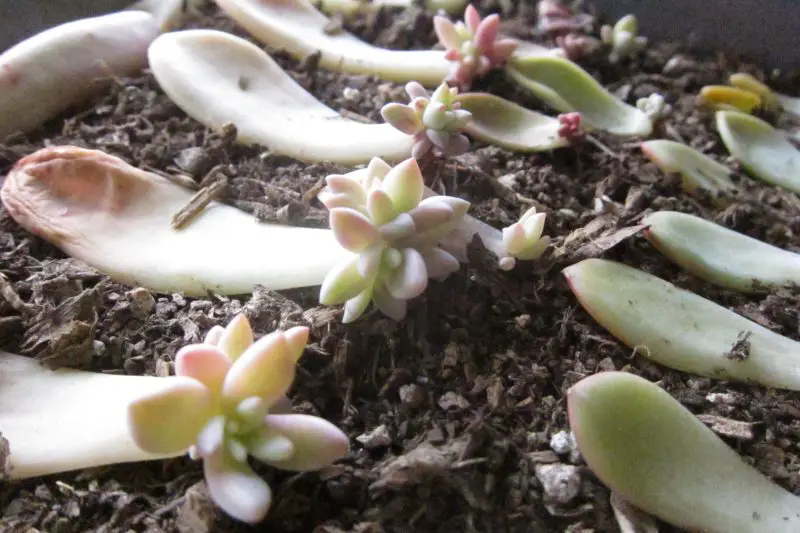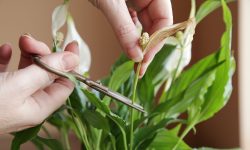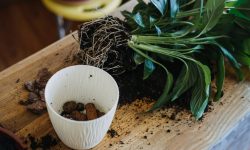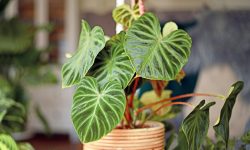There’s something deeply rewarding about growing new life from a single leaf or stem. When you learn how to propagate succulents successfully at home, it becomes more than just a gardening task—it transforms into a calming, creative process filled with joy. Watching tiny roots emerge and baby rosettes take shape is a reminder of nature’s quiet resilience. Whether you’re a curious beginner or a seasoned plant lover, mastering this skill opens the door to endless green possibilities and a more meaningful connection to your garden.
With their sculptural beauty and resilience, succulents are the perfect plants to propagate and share. This step-by-step guide will walk you through everything you need to know to grow healthy, vibrant new succulents from leaves, cuttings, and pups—right in your own home.
Why Propagate Succulents at Home?

Propagating succulents at home offers more than just the satisfaction of watching new plants grow—it’s an empowering and cost-effective way to expand your collection. Instead of purchasing new succulents, you can create dozens of healthy new plants from the ones you already own. This not only saves money but also helps preserve rare or sentimental varieties that may be hard to find again.
Propagation also deepens your understanding of plant care. As you learn how to root a leaf or divide offsets, you become more attuned to your plant’s natural rhythms and needs. It fosters patience, observation, and confidence—all key traits of a successful gardener. Plus, propagating succulents makes it easy to share the beauty with friends and family. A propagated succulent is a personal, living gift that carries the care and attention you gave it from the start.
Whether you’re growing them for your windowsill, to fill your outdoor garden, or to give away as thoughtful presents, propagating succulents brings lasting joy and beauty to your space.
When Is the Best Time to Propagate Succulents?
The ideal time to propagate succulents is during their active growing season—typically in spring or early summer. At this time of year, the days are longer, temperatures are warmer, and your succulents are naturally putting energy into growth. This makes them more likely to recover quickly from cuttings and send out new roots or shoots with minimal effort. Propagation during this period usually results in faster rooting and stronger, more resilient plants.
Avoid propagating during winter or periods of dormancy, especially if you live in a cooler climate. In cold or low-light conditions, succulents slow down metabolically and are less likely to produce roots. Propagation may still be possible under grow lights indoors, but it will generally take longer, and the risk of rot is higher.
Late summer and early autumn can still be viable for propagation in mild climates, particularly if nighttime temperatures remain warm. However, give your cuttings enough time to establish before temperatures drop. For the best success rate, match your propagation schedule with the natural growth cycles of your succulents, and always aim to provide bright, indirect light and consistent warmth for the new cuttings.
Choosing the Right Succulent for Propagation
Selecting the right succulent is the first and most important step to successful propagation. Not all succulents propagate in the same way, and some are more beginner-friendly than others. When choosing a plant to propagate, look for healthy, mature specimens with firm, plump leaves and no signs of disease, rot, or pests. A strong parent plant increases the chances that your new cuttings or offsets will thrive.
Succulents like echeveria, sedum, kalanchoe, and crassula are excellent choices for propagation because they respond well to a variety of methods, including leaf, stem, and offset propagation. These types also root quickly and are more forgiving if you’re still learning. Rosette-forming succulents such as echeveria and graptopetalum are especially popular because of their beautiful symmetry and ease of growing new plants from a single leaf or cutting.
It’s also important to understand the natural growth habits of your succulent. For example, trailing varieties like string of pearls or burro’s tail are better suited to stem cuttings, while clumping succulents like hens and chicks produce offsets that can be easily separated and replanted. By choosing a succulent that aligns with your preferred propagation method and your growing conditions, you set yourself up for a smoother, more rewarding experience.
Tools and Materials You’ll Need
To successfully propagate succulents at home, gather a few basic tools and materials before you begin. You’ll need a clean, sharp pair of scissors or pruning shears to take precise cuttings without damaging the plant. A shallow tray or small pots with drainage holes are essential for rooting your cuttings or leaves.
Use a well-draining succulent or cactus potting mix to prevent rot and encourage healthy root growth. Optional items like rooting hormone can help speed up rooting, though many succulents root easily without it. Have a spray bottle or watering can on hand to lightly mist the soil during early rooting stages. You may also want to prepare plant labels to track propagation dates and varieties. Having everything ready ensures a smooth process from start to finish.
Methods of Propagation
Leaf Cuttings
One of the most rewarding and beginner-friendly methods, leaf propagation allows you to grow new succulents from a single healthy leaf. Choose a mature leaf that detaches cleanly from the stem—avoid any that tear or break unevenly. After removing the leaf, place it in a dry, shaded area for several days to allow the wound to callus, which prevents rot. Once ready, lay the leaf on top of well-draining soil, do not bury it. Mist the soil lightly every few days. Within a few weeks, roots will begin to form, followed by a baby rosette. The original leaf will eventually wither away as the new plant matures.
Stem Cuttings
This method is especially effective for succulent varieties that grow tall or become stretched (etiolated). Select a healthy, non-flowering stem and cut it cleanly using sterile scissors or a knife. Remove several lower leaves to leave a bare stem base, and let the cutting dry in a warm, shaded place for 2–5 days to callus over. Once dried, plant the stem upright into moist succulent mix. Keep it in bright but indirect sunlight and water sparingly. Within a few weeks, roots will develop from the base, and new leaf growth will begin.
Offsets and Pups
Many succulents, such as echeveria, sempervivum (hens and chicks), and aloe, naturally produce offsets or pups—miniature plants that grow at the base of the mother plant. These can be carefully pulled off by hand or cut with a clean blade. Before planting, allow the pup to callus over for 24–48 hours. Once planted in well-draining soil, they often root quickly and begin to grow independently. This method is quick, low-risk, and produces genetically identical copies of the parent plant.
Division
Succulents that form dense clusters, such as certain types of sedum, agave, or kalanchoe, can be propagated by division. Gently unpot the entire plant and separate the root ball into smaller sections, ensuring each piece has a good amount of roots and at least one growing point. Replant the divisions in fresh soil, spacing them well apart. Give the newly potted plants a few days to adjust before watering. Division is a simple and effective way to create several new plants at once, especially when repotting or refreshing an older succulent.
Seeds
Seed propagation is the slowest method but allows for genetic variation and a rewarding growing experience. Purchase high-quality succulent seeds from a reputable source. Prepare a seed tray with moist, well-draining soil and gently press the seeds onto the surface—do not bury them. Cover with a clear humidity dome or plastic wrap to retain moisture. Place the tray in a bright, warm spot out of direct sun. Germination can take several weeks to months, depending on the species. Once seedlings are large enough to handle, transplant them into individual pots. Though time-intensive, this method is ideal for rare or hybrid varieties.
Creating the Ideal Propagation Environment
To successfully propagate succulents, provide a warm, bright, and dry environment. Choose a spot with bright, indirect sunlight to avoid scorching young cuttings. Ideal temperatures range from 68°F to 75°F (20°C to 24°C), with good air circulation but no cold drafts.
Use a well-draining cactus or succulent mix to prevent rot. Avoid regular potting soil, which holds too much moisture. For the first few days, keep the soil mostly dry to help cut ends callous and avoid decay.
Lightly mist cuttings every few days to maintain slight moisture without overwatering. If needed, use a clear plastic cover to boost humidity, but remove it regularly to prevent mold. With patience and the right conditions, your succulents will root and thrive.
Transplanting and Caring for New Plants
Once roots have formed and new growth appears, it’s time to transplant your propagated succulents into their own pots. Use small containers with drainage holes and fill them with a well-draining succulent or cactus mix. Gently place the rooted cutting or baby plant into the soil without damaging the new roots.
After transplanting, wait a few days before watering to allow the plant to settle and reduce the risk of rot. Then, water lightly and only when the soil is completely dry. Place the new plants in bright, indirect light, gradually introducing them to stronger sunlight over time.
Monitor for signs of overwatering or pests and continue with minimal care. With proper light, soil, and watering, your new succulents will establish quickly and grow into healthy, mature plants.
Common Mistakes to Avoid During Propagation
Overwatering
One of the most frequent propagation mistakes is overwatering. Succulent cuttings and leaves require only minimal moisture to stimulate root development. Too much water causes cells to burst or invites harmful fungi and bacteria, leading to stem rot. During propagation, especially before roots form, it’s safer to under-water than overdo it. Mist lightly and only when the propagation medium is dry to the touch. In high-humidity areas, misting may not even be necessary daily.
Poor Drainage
Succulents cannot tolerate soggy soil, particularly during propagation. If water collects at the bottom of containers or the medium stays wet for too long, it deprives the cuttings of oxygen and promotes decay. Always use containers with drainage holes and choose soil mixes designed for succulents. Adding perlite, coarse sand, or pumice boosts drainage and aeration, creating a healthier rooting environment.
Inadequate Light
Light is essential for photosynthesis, even during propagation. Without sufficient brightness, new plants will become leggy, pale, or weak. Place propagating succulents in a spot with bright, indirect light—such as a sunny windowsill—or supplement with LED grow lights if natural light is limited. Avoid intense direct sun until roots form, as this can scorch tender leaves and stalls propagation.
Crowding
Overcrowding trays or pots with too many cuttings reduces air circulation, creating a humid, stagnant environment where fungi and mold can thrive. This not only delays rooting but may also spread disease between plants. Give each cutting enough space for airflow and easy access to light. Proper spacing ensures healthier development and less competition for resources as roots begin to grow.
Rushing the Process
Propagation takes time, and rushing to pot up or water before roots have fully formed can backfire. Be patient. Wait until the cuttings or leaves develop strong, visible roots and show signs of growth before transplanting or increasing care. Moving too quickly can damage delicate new roots and interrupt their development. Trust the slow and steady nature of succulent growth for the best success.
Indoor vs Outdoor Propagation Tips
Indoor Propagation
Propagating succulents indoors gives you greater control over temperature, light, and moisture. It’s ideal during colder months or in humid, rainy climates. Place your cuttings near a south- or east-facing window to provide plenty of bright, indirect sunlight. If natural light is insufficient, supplement with full-spectrum grow lights placed 6–12 inches above the plants for 12–14 hours daily. Ensure good air circulation using a small fan or by keeping windows open occasionally to prevent stagnant air, which can cause mold. Keep the room temperature between 65–75°F (18–24°C) for optimal root development. Monitor humidity levels, especially in enclosed spaces—succulents prefer lower humidity to avoid rot.
Outdoor Propagation
Outdoor propagation is best suited for regions with mild temperatures, low humidity, and minimal rainfall. Choose a location with morning sun and afternoon shade to prevent sunburn on tender cuttings. Protect your propagation area from strong winds, heavy rains, and sudden temperature drops. During the warmer months, you can propagate directly in the ground or in shallow containers filled with well-draining succulent mix. Raised beds, gravelly soil, and rock gardens naturally reduce the risk of overwatering and provide warmth to support root growth. For added protection, use shade cloth on extremely hot days and move containers indoors if nighttime temperatures drop below 50°F (10°C). Outdoor propagation often speeds up rooting due to natural airflow and sunlight, but consistent monitoring is key.
How to Troubleshoot Succulent Problems
Yellowing or Mushy Leaves
Yellow, translucent, or mushy leaves are almost always caused by too much water or inadequate drainage. Succulents store water in their leaves, so excess moisture quickly leads to rot. First, gently remove any damaged or squishy leaves. Then, stop watering and let the soil dry out completely. Check the pot for proper drainage—if it lacks holes, repot into a container that allows excess water to escape. Going forward, water only when the soil is fully dry, and avoid misting or using moisture-retaining soil mixes. For outdoor plants, move them to a spot protected from rain or ensure the planting area drains freely.
Stretching or Leggy Growth
Etiolation, or stretched growth, occurs when succulents don’t get enough light. The plant will grow tall and thin, reaching toward the nearest light source. This results in weakened stems and widely spaced leaves. To fix this, move the plant to a location with more direct or bright indirect light. South- or west-facing windows usually offer the best indoor conditions. If natural light is lacking, use grow lights to provide at least 10–12 hours of consistent brightness per day. You can prune elongated stems, let the cut ends callous, and propagate them into new, compact plants.
Pests and Diseases
Succulents can fall prey to common pests like mealybugs, scale, spider mites, or fungus gnats, especially when humidity is high or airflow is limited. Mealybugs appear as white cottony clumps, while spider mites leave tiny webbing and stippling on leaves. Root rot or fungal leaf spots may also develop due to poor air circulation or overly wet soil. Inspect your succulents weekly, especially under the leaves and near the soil line. At the first sign of trouble, isolate the affected plant to prevent the issue from spreading. Treat pests by dabbing them with rubbing alcohol on a cotton swab or spraying with neem oil or insecticidal soap. For fungal problems, remove affected parts and improve airflow and light exposure.
Benefits of Propagating Succulents Properly
Propagating succulents the right way offers both practical and rewarding benefits for gardeners of all experience levels. When done correctly, propagation leads to healthier plants, more robust growth, and a thriving succulent collection with minimal cost.
Proper propagation ensures that new plants inherit the desirable traits of their parent, such as compact shape, vibrant color, and strong root systems. It also reduces the risk of rot or disease that often comes from improper cutting, poor airflow, or soggy soil. By following proven techniques, each cutting or offset has a higher chance of successful rooting and long-term survival.
Another key benefit is sustainability. Propagation allows you to multiply your plants without relying on store-bought replacements. This is especially valuable for rare or expensive varieties, or if you’re designing a large succulent arrangement. You can share extra plants with friends, swap with fellow gardeners, or use them in creative landscaping.
Finally, propagating succulents deepens your understanding of how they grow. It sharpens your ability to read signs of plant health, soil needs, and environmental conditions. With time and practice, you’ll be able to propagate confidently year-round and grow a resilient, low-maintenance collection filled with personal meaning.
Frequently Asked Questions About Propagating Succulents Successfully
How long does it take for succulent cuttings to root?
Most succulent cuttings begin forming roots within 2 to 3 weeks under the right conditions. Leaf cuttings may take slightly longer, especially in cooler weather. Speed depends on the type of succulent, temperature, humidity, and light exposure. Providing bright, indirect light and keeping the soil lightly moist (not wet) speeds up rooting.
Do I need to use rooting hormone when propagating succulents?
Rooting hormone is not necessary for most succulents, as they naturally produce roots quite easily. However, it can speed up the process and increase success with more difficult or slow-to-root varieties. If you’re propagating rare or finicky types, a dusting of rooting hormone may help—but clean cuts and dry calluses are more important.
Why are my succulent leaves shriveling after propagation?
Shriveled leaves during propagation often mean the leaf is using its stored water to produce roots or new growth. This is normal, especially in leaf propagation. If the leaf shrivels without forming roots or baby plants, it may have dried out too quickly or been damaged. Keep humidity moderate and avoid direct sun until roots appear.
Can I propagate succulents in water?
Yes, some succulents—especially stem cuttings—can be propagated in water. Place the cut end just above the water surface so roots grow toward the moisture without the stem sitting in water. However, soil propagation is more natural for succulents and leads to quicker acclimation once transplanted. Water propagation is useful in humid climates or when monitoring root growth closely.
When should I transplant newly propagated succulents?
Wait until new roots are well-established—usually 3 to 6 weeks—before transplanting. For leaf propagations, ensure a small rosette has formed and roots are at least 1–2 inches long. Transplant gently into dry, well-draining soil and avoid watering for 2–3 days afterward to reduce transplant shock.
Conclusion
Learning how to propagate succulents at home is a fulfilling way to grow your plant collection, rejuvenate aging plants, and enjoy hands-on gardening. With the right tools, timing, and care, anyone can succeed in multiplying succulents. Whether you choose leaf cuttings, stem cuttings, or offsets, every new plant is a testament to your dedication and green thumb. Start small, stay patient, and celebrate each new root and rosette along the way.






